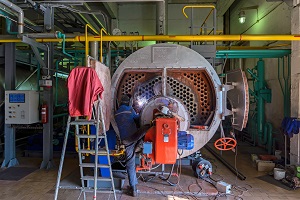(10/23/2017)
With each passing year, profitability becomes harder to achieve for healthcare facilities. After all, patient care, safety and satisfaction all take money — lots of it. Regrettably, common cost-cutting tactics end up costing healthcare facilities far more down the road in dollars, inefficiencies, and quality slip-ups.
In this article, we highlight three perceived “savings” that will come back to bite you.
1. Replacing employees with service contracts.
Among the easiest expenses for healthcare facilities to control are salaries, and many organizations resort to cutting staff to reduce costs. And it does work in the short term, but at a high, long-term cost: Work still must be done, but lacking the manpower or know-how to do it, facilities grow more and more reliant on external service contracts.

At times, outsourcing can be a good thing. But most of the time, service contracts can cost twice or more what it would cost you to hire and train an in-house employee to perform the same work and more.
Thinking about the number of contracts it takes to manage your facilities today, could that price tag allow you to double or triple your in-house team and capabilities instead? It’s quite possible, yes — we’ve witnessed and documented it hundreds of times in healthcare facilities all over the country.
Next time you’re tempted to eliminate a position from your facilities team, consider eliminating a contract instead, or at least renegotiating its terms. Your best chance to boost your ROI in a way that’s both dramatic and sustainable, year after year, is to work toward self-sufficiency, reducing your dependency on contracts over time.
2. Deferring maintenance and repairs
If you’ve been following regulatory changes in recent months, you may have noticed surveyors are taking a much harder look at hospital infrastructure and physical environments than in the past. As scrutiny grows, the remediation window allowed by regulators has shrunk dramatically.

In the past, you could get away with waiting to fix facilities issues until a year or so before a regulatory survey. Many hospitals also counted on the generous grace periods that could stretch over another year or two. Not anymore. Sixty days is all you get to fix deficiencies, and exceptions to that timeframe are nearly impossible to obtain.
The solution is simple: Self-identif
y and remediate issues early, spreading them out over the years you have between surveys. Waiting until a surveyor catches a deficiency and demands resolution within 60 days is going to be far more expensive, and a much bigger headache.
You have roughly three years between surveys. Use them to spread expenses, avoid interruptions, and prevent higher costs and compliance issues down the road.
3. Not investing in employees’ professional development
Want a recipe for high turnover, employee disengagement, and sky-high expenses? Then withhold training and advancement opportunities from your team.

High-performing leaders know that investing
in their people is a great way to reap
increased ROI and efficiencies. How so? Data from countless studies and our own work in hundreds of healthcare facilities tell us that (a) ROI from growing internal capabilities trumps that of service contracts, and (b) employee engagement has tremendous impact on productivity, customer satisfaction and revenue.
Our advice: Provide both informal and formal training opportunities, including leadership development and advancement paths so no position is a dead end in your facility. Just as important, involve employees in decisions about their own development and career path.